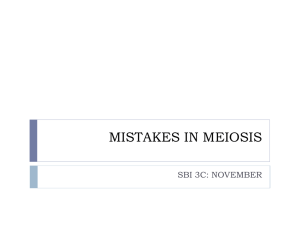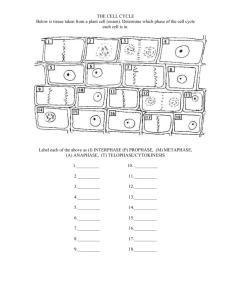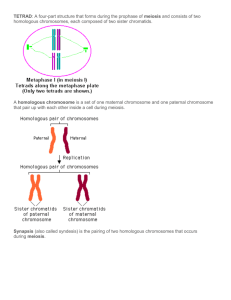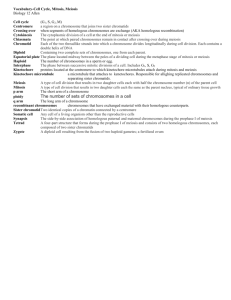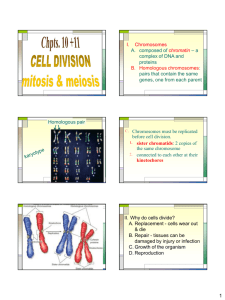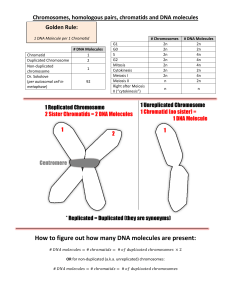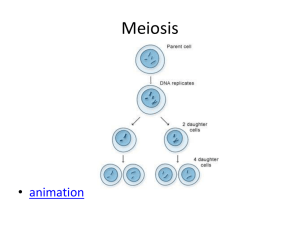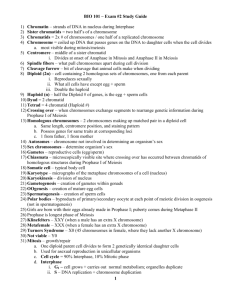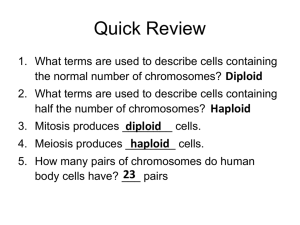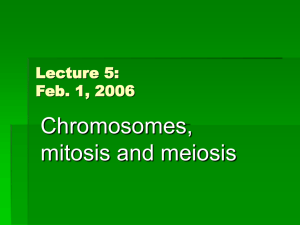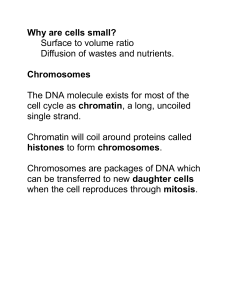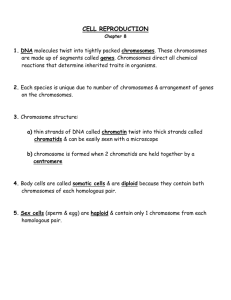6. Last Meiosis Worksheet and Nondisjuction
advertisement
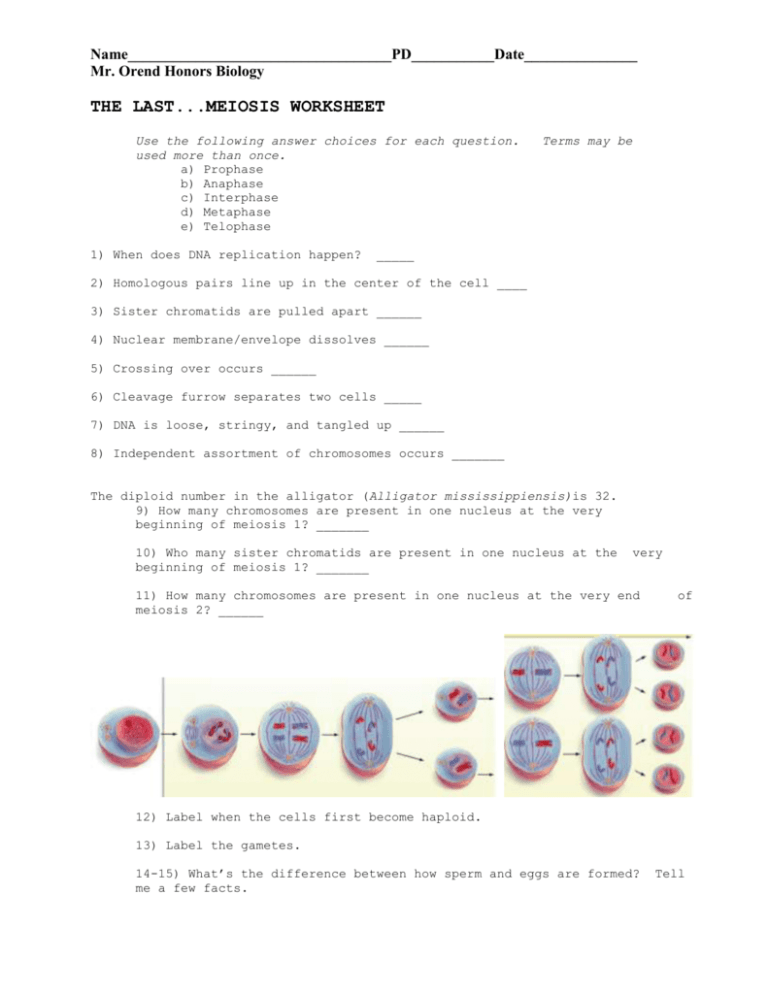
Name___________________________________PD___________Date_______________ Mr. Orend Honors Biology THE LAST...MEIOSIS WORKSHEET Use the following answer choices for each question. used more than once. a) Prophase b) Anaphase c) Interphase d) Metaphase e) Telophase 1) When does DNA replication happen? Terms may be _____ 2) Homologous pairs line up in the center of the cell ____ 3) Sister chromatids are pulled apart ______ 4) Nuclear membrane/envelope dissolves ______ 5) Crossing over occurs ______ 6) Cleavage furrow separates two cells _____ 7) DNA is loose, stringy, and tangled up ______ 8) Independent assortment of chromosomes occurs _______ The diploid number in the alligator (Alligator mississippiensis)is 32. 9) How many chromosomes are present in one nucleus at the very beginning of meiosis 1? _______ 10) Who many sister chromatids are present in one nucleus at the beginning of meiosis 1? _______ very 11) How many chromosomes are present in one nucleus at the very end meiosis 2? ______ of 12) Label when the cells first become haploid. 13) Label the gametes. 14-15) What’s the difference between how sperm and eggs are formed? me a few facts. Tell WHAT IS NONDISJUNCTION? Nondisjunction - the failure of one or more pairs of homologous chromosomes or sister chromatids to separate normally during nuclear division, usually resulting in an abnormal distribution of chromosomes in the daughter nuclei. OOPS!!!!!!!!!! More simply, during anaphase, the chromosomes get STUCK TOGETHER and each cell doesn’t get an equal number…. This could happen during Meiosis I (when separating homologous pairs) or during Meiosis II (when separating sister chromatids), as shown below. If these gametes (whether sperm or egg) are used during fertilization, the offspring will have either one more, or one less chromosome than normal (i.e. 45 or 47 in humans). This is called a Aneuploidy - the presence of an abnormal number of chromosomes in a cell. Monosomy is when there is only one chromosome of a pair (missing a chromosome). Trisomy is when there is three chromosomes of a pair (an extra chromosome. This causes disorders such as Down’s syndrome, Turner’s Syndrome, Trisomy 13, Klinefelter’s disease, etc. Go to the following website to learn more about nondisjunction. • http://learn.genetics.utah.edu/content/begin/traits/predictdisorder/ THERE WILL BE A QUIZ ON THIS TOMORROW!!!!

